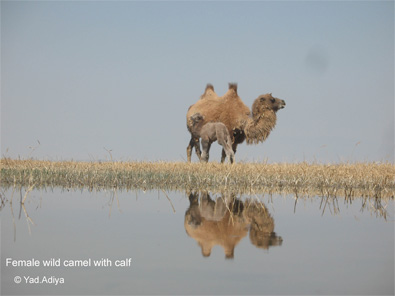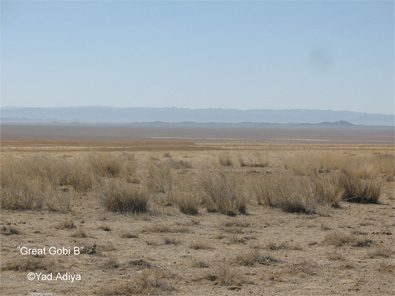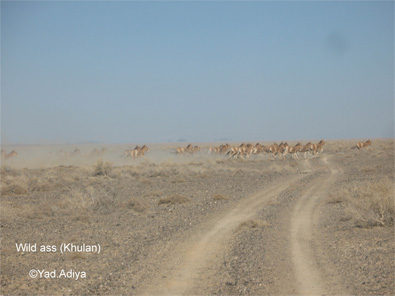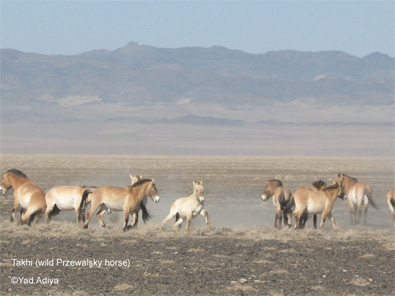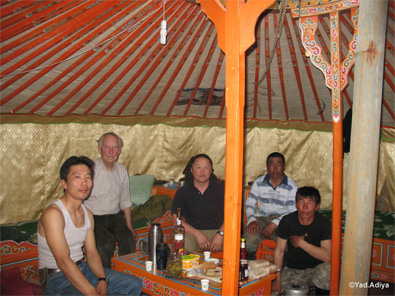Adiya is our Mongolian EDGE Fellow studying the wild Bactrian camel. From the 19th to 28th April this year he went on an expedition to Zahyi Us and Great Gobi B Strictly Protected Area. Here is the report Adiya sent of his trip:
The purpose of this Field Trip was to see if the Strictly Protected Area Gobi B was suitable for the release of captive bred wild Bactrian camels from the breeding centre at Zach Us. It is said that many years ago wild camels did use the area as a natural habitat. The population of wild camels at Zakhyn Us is increasing and in particular there is a surplus of young males who fight and cause damage during the breeding season (December to Febuary).
This photo is in the Zahyi Us, Captive Breeding Center, near in Bayantooroi village.
Gobi B is approximately 350 kms from Gobi A. We went on a longer route and we had to make sure that there was enough diesel for the trip. On arrival we were met by Saikhanaa who is in charge of the Takhi (wild Przewalsky horse) introduction programme into Gobi B.
During the field trip with Saikhanaa into the protected area it was immediately obvious that wild camels could not be introduced before domestic camels had left the park. Although the law states that no domestic animals may enter the park, the park authorities have allowed camels and other livestock owned by local herders to come in at certain times of year. However, as wild camels can and do mate with domestic camels it would be a disaster if the only result of the release of wild camels into the area was the production of unwanted hybrid camels!
It was decided that a proposal would be put to the Mongolian NGO of the Wild Camel Protection Foundation to see if the NGO will agree to put the proposal to the Ministry of Environment and Nature because, apart from the question of domestic camels, the habitat appears to be ideal for a release programme.
Later on the field trip we observed over 500 khulan (wild ass) in two large groups. They ran south towards the mountains at over 60km an hour and it was a spectacular sight.
We later observed 16 Takhi including one-week-old calf and a second group of 12. The reintroduction programme of the Takhi is currently a success which gives us hope for a wild camel release programme.
From left to right sitting: Enkhbileg (Captive breeding programm), John Here (WCPF England), Adiya (EDGE fellow), Bat-Erdene (Veterinary, Captive breeding center), Tsog-Erdene (Camel herder).
Thank you for helping us conserve the wild camels.
Yad.Adiya. EDGE fellow, Wild camel researcher in Mongolia.
If you would like to support Adiya’s work to conserve the wild Bactrian camel in Mongolia please click here.
